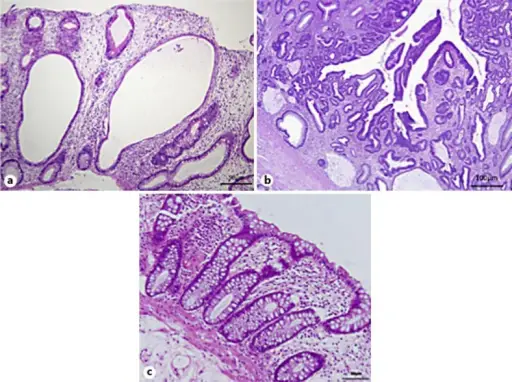Diversion colitis is a nonspecific inflammatory disorder that occurs in segments of the colon and rectum
What is the Pathology of Diversion Colitis?
The pathology of diversion colitis is:
-Etiology: The cause of diversion colitis is inflammation.
-Genes involved: FFAR2 gene.
-Pathogenesis: The sequence of events that lead to diversion colitis deficiency of short-chain fatty acids due to alterations in gene, which are usually derived from fermentation of dietary starches by normal colonic bacterial flora. Short-chain fatty acids are the main source of energy for colonocytes.
-Histology: The histology associated with diversion colitis shows inflammation of colon.
How does Diversion Colitis Present?
Patients with diversion colitis typically in all genders at any age. The symptoms, features, and clinical findings associated with diversion colitis include mucous discharge, abdominal pain, or low-grade fevers.
How is Diversion Colitis Diagnosed?
Diversion colitis is diagnosed when bloody mucopus is passed from the separate colorectal segment. The colon may be isolated by diverting ileostomy, end or loop colostomy, mucous fistula, or Hartmann procedure.
How is Diversion Colitis Treated?
Diversion colitis is treated by reanastomosis, or the rejoining of the defunctioned bowel to the rest of the intestines.
What is the Prognosis of Diversion Colitis?
The prognosis of diversion colitis is fair. In some severe cases if diversion colitis is left untreated, it may lead to colonic stricture the narrowing of a section of the intestines or the complete loss of function of the defunctioned bowel.



